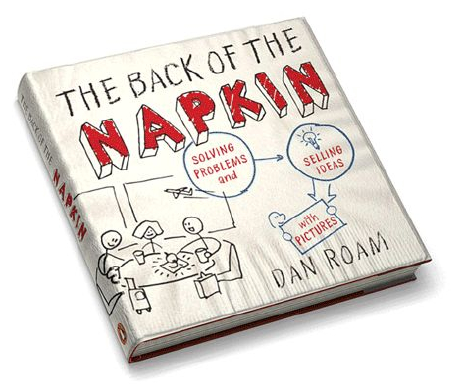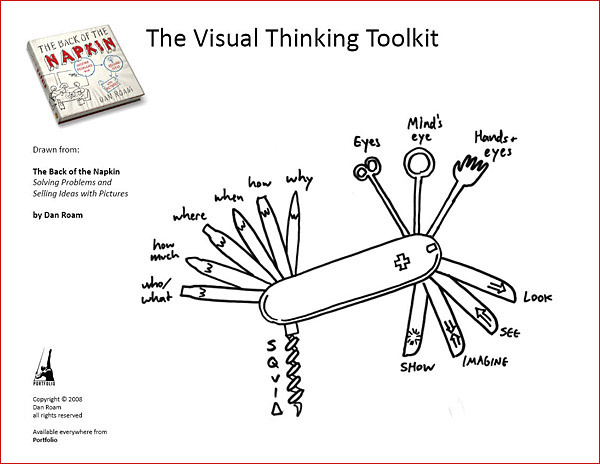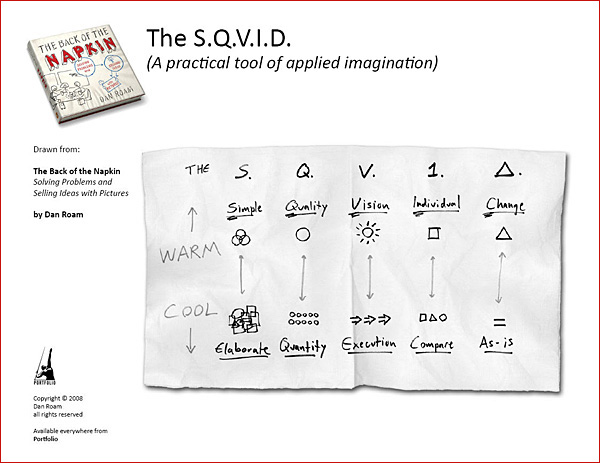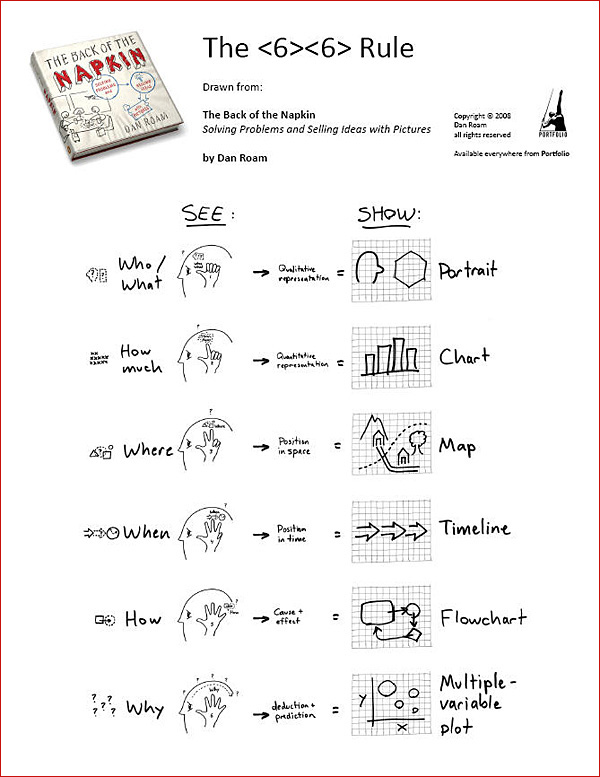“Visual thinking means taking advantage of our innate ability to see – both with our eyes and with our mind’s eye – in order to discover ideas that are otherwise invisible, develop those ideas quickly and intuitively, and then share those ideas with other people in a way that they simply “get”.” Dan Roam (Author, Back of the Napkin)
I am one of those individuals who enjoys putting a pen to paper and making sense of any issue or problem through pictures and charts. I have to admit I am not artistic by any stretch of imagination, and people usually have difficulty in deciphering the stuff that I put up. Nonetheless, I find the act of visually depicting a story or challenge, to be an extremely powerful tool, one that should be there in every entrepreneurs tool kit. While browsing at a local book store a while back I caught a glimpse of this book and the cover image caught my attention.

Back of the Napkin by Dan Roam
This book covers a very interesting concept, after flipping through the book for the first time, I remember thinking that the author had done a great job putting together abstract concepts in a most exciting visual manner. I am glad I found this book as it has provided me with a framework to actually make sense of the visuals I use in brainstorming sessions or when giving presentations. An important note I want to make before moving forward with the review is that you don’t need to know how to draw or be artistic to make use of this book. It’s principles apply as much to those of us who prefer to sit back and comment on a visual as to those who are eager to depict the visualization on a whiteboard.
The book is split up into 4 parts, the first takes you from understanding the power of using pictures to solve problems, the next part equips you with a fundamental knowledge of some frameworks to use, the third section is my favorite as it merges the first and second parts into a powerful application of the frameworks, and the last part shows you how to actually use pictures to sell and present your ideas. The parts flow naturally well together and I was inspired many a time while reading the book to get up and use the frameworks that had been introduced and apply them to some of the business issues we were facing. When I did, the results were truly remarkable.
I often just get up to the board and start to draw or write whatever comes to mind without realizing that it may be difficult for others to actually decipher what I am doing. The frameworks in the book such as “Six ways of seeing” and “SQVID” (see pictures below) helped me to literally visualize what I wanted to say through my pictures before I actually did. I began to see things differently and details I hadn’t thought about initially, started to take shape. I think different people will experience such epiphanies at different stages and levels, varying on how quickly you grasp the techniques. Confidence with the pen will follow!
As an entrepreneur I know how important it is to be able to communicate your ideas to a target audience, irrespective of whether you are pitching to a client, investor or your own partners. The message needs to be delivered in a manner that enables your audience to “get” the message. The saying that ‘a picture is worth a thousand words’ is truly a powerful concept and when harnessed competently can open any number of doors and opportunities. I recommend this book to anyone wanting to improve the way they deal with difficult problems, as well as becoming a more competent presenter.
Related Links:
– Amazon.com has ranked The Back of the Napkin as the number five business book of 2008
– BusinessPundit: #4 business book of the year
– Best of BNET 2008: BNET’s Best Business Books


